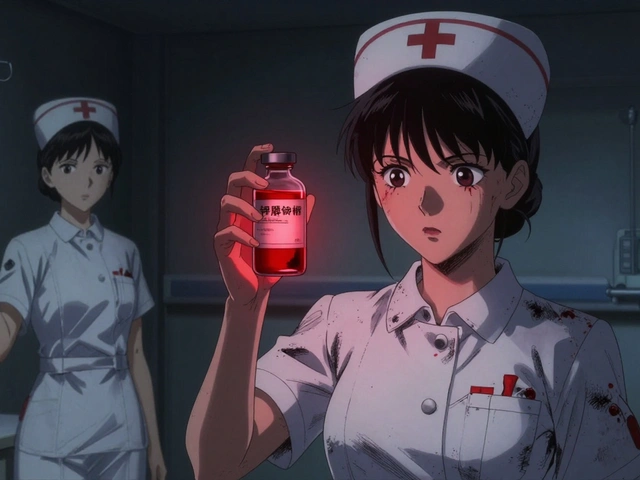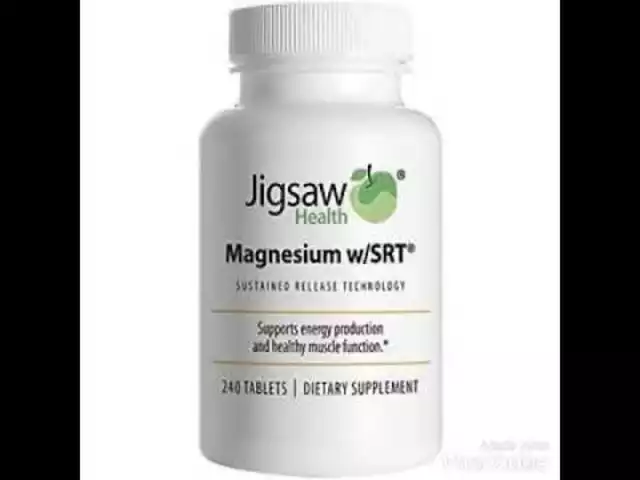You want the straight answer: with timely treatment, most people with Graves' disease live a normal life span and feel well. The long game is about reducing relapse, protecting your eyes, heart, and bones, and choosing a treatment path that fits your plans-work, family, pregnancy, even travel. I’ll keep it simple, evidence-based, and practical.
Here’s what you’re likely trying to do after clicking this: understand the real odds of remission and relapse; compare long-term outcomes across antithyroid drugs, radioiodine, and surgery; get a clear view on life expectancy and complications; know how eyes, heart rhythm, and bones fare over time; plan for pregnancy; and build a monitoring plan that doesn’t take over your life.
TL;DR: The Long-Term Outlook in Plain English
Graves' disease prognosis is good when treated. Most people live a normal life span. Antithyroid drugs (ATDs) put about 40-50% into long-term remission after a 12-18 month course; relapse is more likely with large goiters, smoking, and high TRAb antibodies. Radioiodine (RAI) and total thyroidectomy are “definitive”-they usually cure the hyperthyroidism, but you’ll likely need lifelong levothyroxine. Eyes can be a curveball: smoking and radioiodine can worsen eye disease if not protected with steroids; surgery or ATDs don’t usually make eyes worse. Bone and heart risks improve once thyroid levels stay normal. Quality of life bounces back in most, though some people still report fatigue or anxiety-worth treating directly, not just waiting out.
If you want a quick rule of thumb: ATDs suit people aiming for a drug-free remission, especially with small glands and low antibody levels. RAI fits those who prefer a non-surgical “once and done” path and aren’t at high risk for eye disease (or can take protective steroids). Surgery is best when a big goiter needs shrinking fast, when nodules look suspicious, when pregnancy is planned soon, or when eyes are moderate-to-severe.
Jobs to be done, tied to what follows:
- Gauge your remission vs relapse odds and life expectancy.
- Choose a treatment path based on your risks and plans (including pregnancy).
- Protect eyes, heart, and bones for decades.
- Set a no-nonsense monitoring schedule that actually works.
- Handle relapses or special situations without panic.
Choosing a Path: ATDs vs Radioiodine vs Surgery (And What It Means Years From Now)
Think of treatments by their long-term trade-offs. ATDs aim for remission without removing or ablating the thyroid. RAI and surgery aim for cure of hyperthyroidism, accepting a high chance of hypothyroidism managed with a simple daily tablet. Here’s how to weigh them in real life.
What the big guidelines say: The American Thyroid Association hyperthyroidism guideline (2016) and the European Thyroid Association statements back all three options. NICE guidance in the UK encourages shared decision-making and matching treatment to personal risks and goals. These aren’t rigid rules; they’re a map.
Quick decision cues I use when explaining this to friends and readers:
- If you’re hoping for a drug-free future and your thyroid gland is small, you don’t smoke, and your TRAb antibody level is low or falling-ATDs give you the best shot at remission.
- If you want an off-switch for hyperthyroidism and don’t mind taking levothyroxine for life-RAI or surgery makes sense.
- If your eyes are a concern (active moderate-to-severe thyroid eye disease), avoid RAI or use steroid cover; surgery or ATDs are kinder to the eyes.
- If you need fast control (very high hormones, large goiter pressing on your windpipe), surgery is the speediest fix once you’re stabilized on meds.
- If pregnancy is on the calendar soon (within 6-12 months), consider ATDs or surgery. RAI needs contraception afterward (usually 6 months for women).
Durable outcomes you can expect:
- ATDs (carbimazole/methimazole or PTU): about 40-50% long-term remission after a standard 12-18 month course. Some stay on low-dose long-term to keep things steady-reasonable if you tolerate the drug and labs look good.
- RAI: hyperthyroidism resolves in 80-90% after one dose; hypothyroidism is common within a few years, which is the goal for many. If eyes are active and you smoke, steroids reduce the risk of worsening.
- Surgery (usually total thyroidectomy): almost immediate cure of hyperthyroidism; lifelong levothyroxine. Complications are uncommon in experienced hands (more on that below).
What about quality of life in the long run? Large European cohorts report near‑normal life expectancy once you’re euthyroid. Some people-especially after years of untreated hyperthyroidism-carry lingering fatigue, anxiety, or brain fog. Don’t white‑knuckle it. Treat the symptom: sleep support, mental health care, iron/B12/vitamin D checks, exercise that you actually enjoy. I set reminders while feeding Nimbus, my cat, and it keeps me honest with meds and labs.
Numbers you can use (summarized-figures vary by study and centre):
| Treatment | Usual course | Hyperthyroidism resolved | Relapse or retreatment need | Lifelong levothyroxine | Eye disease impact | Best fit |
|---|---|---|---|---|---|---|
| Antithyroid drugs (ATDs) | 12-18 months (sometimes low‑dose long‑term) | Long‑term remission ~40-50% | Relapse ~30-60% within 1-2 years if TRAb high; ~20-30% if TRAb low | ~5-15% | Neutral; no typical worsening | Small goiter, low TRAb, planning pregnancy soon |
| Radioiodine (RAI) | One dose; sometimes a second | 80-90% after first dose | ~10-20% need second dose | ~70-90% within 5 years | Can worsen if active eye disease, esp. smokers; steroid cover helps | Relapse after ATDs, nodular goiter, prefer non‑surgical |
| Total thyroidectomy | Single operation | ~100% (once stabilized) | Very low (recurrence rare) | ~100% | Neutral; may help by rapid control | Large goiter, suspicious nodules, severe eye disease, pregnancy plans soon |
Data reflect ranges from ATA and ETA guidance and high‑quality cohort studies; your clinic’s numbers may differ a bit based on surgical volume, dosing, and follow‑up protocols.
Safety notes you should actually remember:
- ATDs: rare but serious agranulocytosis (very low white cells). If you get a sore throat and fever, stop the drug and get an urgent blood count. Liver injury risk is higher with PTU; in the UK methimazole/carbimazole is preferred except in early pregnancy.
- RAI: avoid close, prolonged contact with young children and pregnancy for a short period after dosing; your team will give exact timings. Women usually avoid pregnancy for 6 months after RAI.
- Surgery: transient low calcium is common; permanent hypoparathyroidism is uncommon (~1-3%). Voice nerve injury is rare (<1-2%) in experienced hands.

Life Expectancy, Complications, and Staying Well for Decades
Life expectancy: once your thyroid levels are controlled and stay stable, large registry studies show near‑normal survival. The extra risk sits in the untreated or poorly controlled phase-especially for heart rhythm problems (atrial fibrillation) and bone loss. That’s why a boring, consistent plan beats heroic bursts.
Heart and rhythm: Hyperthyroidism pushes your heart like a double espresso on repeat. After control, the risk of atrial fibrillation drops but isn’t zero, especially with age. If you feel fluttering, racing, breathless, or you’re using a smartwatch and it flags irregular rhythm-tell your GP or endocrinologist. Beta‑blockers early on are common; long term, keep blood pressure, weight, and alcohol in check.
Bones: Hyperthyroidism speeds up bone turnover-think building and demolishing happening too fast. Once euthyroid, bone density tends to improve. Resistance training twice a week, vitamin D sufficiency, and enough calcium from food are simple wins. If you’re post‑menopausal or have fracture risks, ask about a DEXA scan.
Eyes (thyroid eye disease): About a quarter to half of people get eye symptoms at some point, most mild. Smoking is the single biggest avoidable risk-quitting cuts both incidence and severity. If eyes are red, gritty, bulging, or vision is doubled, get assessed early; treatments include selenium for mild cases, steroids or teprotumumab (where available), and surgery for severe cases. RAI can worsen active eye disease, especially in smokers; steroid cover is protective.
Mood and cognition: Anxiety, irritability, and brain fog can linger even after labs look great. This isn’t “in your head.” Hyperthyroidism stresses the nervous system; recovery takes time. Cognitive rehab tricks work: regular sleep, scheduled breaks, protein with breakfast, and short, sharp exercise. Therapy and, if needed, medication for anxiety or depression can be game‑changing.
Pregnancy and fertility: You can have healthy pregnancies with Graves’. Timing matters. If you’re on ATDs, UK practice often uses PTU in the first trimester, then switches to methimazole/carbimazole after. If you’ve had RAI, plan to delay pregnancy (usually 6 months). TRAb antibodies can cross the placenta, so your team may monitor the baby’s thyroid late in pregnancy if your levels are high. Surgery is an option before pregnancy if you want to avoid meds later.
Work and daily life: Most people are back to normal routines once stabilized. If you’re on levothyroxine after RAI/surgery, take it on an empty stomach, same time daily. Set one simple system and stick with it-phone alarm, pill box by the kettle. Mine chirps at 7am while I bribe Nimbus away from my keyboard.
Monitoring schedule that works without fuss:
- Early phase (diagnosis or relapse): thyroid function (TSH, free T4) every 4-6 weeks until stable.
- On ATDs: adjust dose to the smallest that keeps you euthyroid; check TRAb near the end of the 12-18 month course to judge relapse risk.
- After RAI or surgery: check every 6-8 weeks at first while finding your levothyroxine dose, then 6-12 months for life.
- Eyes: if symptomatic, early referral; if you smoke, get support to quit-it’s the single strongest eye‑saving move.
- Hearts and bones: blood pressure yearly; consider DEXA if risk factors. Keep up with exercise and vitamin D.
When you and your clinician are on the same page-and your plan is realistic-long‑term outcomes almost always improve.
Checklist, Scenarios, and Quick Answers
Decision checklist (print‑friendly):
- My top goal is: remission without ablation OR definitive cure with simple daily tablet.
- Pregnancy plan in the next 6-12 months? If yes, lean ATDs or surgery; avoid RAI for now.
- Eye disease active or moderate‑to‑severe? If yes, avoid RAI unless steroid cover is planned.
- Smoker? Quitting is the biggest move you can make for your eyes and relapse risk.
- Goiter size: small vs large; nodules or suspicion of cancer? Large/suspicious tips toward surgery.
- TRAb level: high and staying high (higher relapse risk) vs low or falling (better ATD remission odds).
- Comfort with lifelong levothyroxine: happy with it (RAI/surgery fine) vs want to try for drug‑free (ATDs).
Rule of three for stopping ATDs with confidence:
- TRAb low or negative near month 12-18.
- Small thyroid on exam/scan.
- Stable TSH with low‑dose methimazole for 6 months. Two of three? Your remission odds look better.
Common scenarios and what to do next:
- Relapse after ATDs: Options-another ATD course (if you did well first time), switch to RAI, or choose surgery. If eyes are active or you’re planning a baby soon, surgery is often favoured.
- Eye symptoms after RAI: Tell your team quickly. Steroid course can blunt the inflammation. Stop smoking if you haven’t already; it matters immediately.
- Still hyperthyroid 6 months after RAI: Not rare. A second dose is routine and effective.
- Can’t tolerate ATDs (rash, liver issues): Switch strategies-RAI or surgery after stabilizing with beta‑blockers +/- iodine under specialist care.
- Fatigue won’t budge even with normal labs: screen for iron, B12, vitamin D; treat sleep; consider therapy for anxiety; resist “just cope”-these are fixable.
Mini‑FAQ:
- Will I live a normal lifespan? Yes, if treated and kept euthyroid. The excess risk is mainly in the untreated or poorly controlled phase.
- Is levothyroxine forever a problem? Not really. It’s a steady, predictable hormone replacement. The dose may need tweaks after weight change, pregnancy, or new meds.
- Can I exercise hard? Yes, once your heart rate is controlled and labs are stable. Build back gradually; strength work helps bones.
- Diet-do I need to avoid iodine? Extreme restriction isn’t needed. Avoid kelp/seaweed supplements and very high‑iodine products. Eat a balanced diet.
- Can I get pregnant? Yes. Plan timing with your team. If on ATDs, PTU is usually used first trimester; many switch to carbimazole/methimazole later.
- Does RAI cause cancer? Large studies don’t show a clear increase when used at standard doses for Graves’. Your team will discuss risks in context.
- Can I ever be “done” with labs? After definitive therapy, expect yearly checks. It’s simple maintenance, like an MOT.
Next steps by persona:
- Young adult aiming for drug‑free remission: ask about TRAb levels and goiter size; discuss a 12-18 month ATD plan with a clear stop date and relapse plan.
- Parent with little kids at home: if RAI logistics are tough, consider ATDs or surgery; if choosing RAI, plan the brief radiation precautions around childcare.
- Planning pregnancy within a year: lean ATDs or surgery; avoid RAI until after the baby. Ask how your TRAb affects the plan.
- Smoker with eye symptoms: push smoking cessation to the top; prefer ATDs or surgery; if RAI is chosen, insist on steroid protection and close eye follow‑up.
- Relapsed after two ATD courses: consider RAI or surgery for a definitive fix; ask about your centre’s success rates and surgeon volumes.
How to talk to your clinician so you get what you need:
- Open with your top goal (remission vs definitive cure; pregnancy plans; eye worries).
- Ask for your TRAb number and goiter assessment-these change the math.
- Agree on a monitoring schedule you can keep. Fewer missed labs = fewer flare‑ups.
- Get a one‑page plan for relapse signs and who to contact.
Credibility corner (why I’m confident in this guidance): The outcomes and numbers above align with the American Thyroid Association 2016 Hyperthyroidism Guideline, European Thyroid Association statements on Graves’ disease and orbitopathy (2018-2022), and UK NICE guidance on thyroid disease (2019, updated). Cohort data from Scandinavian and UK registries show near‑normal life expectancy after stable treatment, with most excess risk tied to uncontrolled hyperthyroidism. If your clinic quotes slightly different percentages, it’s usually about local dosing and follow‑up routines-not a different reality.
One last nudge: whichever path you pick, consistency wins. Take meds the same way, show up for labs, and don’t ignore eye or heart symptoms. Make it easy on yourself-tie pills to a daily habit. Mine is tea at 7am, Nimbus circling, and a quick check of my to‑do list. It’s simple, and it works.




Vanessa Peters
September 2, 2025 AT 08:07When you look at the relapse numbers, the smoking variable alone can add a 20‑30% bump to the odds, and that’s before you factor in goiter size or TRAb titer. The data from the European cohorts show a clear dose‑response: the more cigarettes per day, the steeper the relapse curve. In practice that means a patient who quits smoking before starting ATDs can shave off roughly a third of their relapse risk. It’s not magic, it’s just biochemistry – nicotine drives inflammation and amplifies the autoimmune loop. So if you’re weighing ATDs versus RAI, toss the smoking habit into the equation first. Even a modest reduction in pack‑years translates into a measurable extension of remission duration. That’s why endocrinology clinics are quick to hand out nicotine patches alongside carbimazole prescriptions. It’s a cheap, high‑yield intervention that improves the odds of staying euthyroid without needing a second‑line therapy later.
Suzan Graafstra
September 5, 2025 AT 05:33In the grand theatre of the human body, Graves’ disease is a tempest that tests the very notion of balance. The thyroid, perched like a vigilant sentinel, suddenly erupts into hyper‑activity, spilling hormones into the bloodstream like an overenthusiastic bartender. Yet the drama does not end with the surge of metabolism; it reverberates through the eyes, the heart, the bones, whispering the fragility of our mortal architecture. When we speak of remission, we are really speaking of a temporary cease‑fire in this internal war. A 40‑50% chance of long‑term remission after a disciplined course of antithyroid drugs is not a guarantee, but a statistical promise that the immune tide can ebb. The tides, however, are swayed by invisible forces: smoking, iodine intake, and the stubborn persistence of TRAb antibodies. Consider the patient who dreams of motherhood; the choice of treatment becomes a moral compass pointing toward a path that preserves both life and liberty. Radioiodine, often dismissed as a blunt instrument, can be a precise scalpel when paired with steroid cover to safeguard the eyes from autoimmune flare‑ups. Surgery, on the other hand, is the decisive sword that cuts through the gland, delivering certainty at the price of lifelong hormone replacement. Each option carries a hidden ledger of risk and reward, a ledger that must be balanced against personal values and future aspirations. The evidence tells us that mortality aligns with the achievement of euthyroidism, regardless of the route taken to get there. What remains elusive is the qualitative experience of fatigue and anxiety that linger like shadows after the storm has passed. These lingering symptoms remind us that medicine is not merely about numbers, but about the narratives that patients live. Thus, a comprehensive plan must include not only labs and imaging, but also sleep hygiene, mental health support, and vigilant bone health monitoring. In the end, the long‑term prognosis of Graves’ disease is a tapestry woven from clinical evidence, personal choice, and the unrelenting human will to adapt.
Kripa Mohamed
September 8, 2025 AT 03:00If you smoke, your relapse odds jump sky‑high.
Ralph Louis
September 11, 2025 AT 00:27Listen, the whole “just pick whatever” attitude is a lazy shortcut that ignores the ethical weight of lifelong medication. Throwing RAI at a patient without counseling about possible eye‑disease flare‑ups is like handing someone a loaded gun and saying “good luck”. The real issue is informed consent, and the medical community has been shirking that responsibility for far too long. If you’re going to advocate for surgery, champion the fact that it eliminates the capriciousness of hormone swings, not just the convenience of a single injection. And for the sake of clarity, any regimen that requires you to monitor labs every few weeks is a testament to the patient’s commitment, not a flaw in the treatment. Bottom line: sound choices come from disciplined dialogue, not from marketing hype.
Angela Allen
September 13, 2025 AT 21:53i totally get how scary all those numbers can feel, i’ve been there and the idea of a lifelong pill made my stomach flip. the good news is that most folks end up feeling pretty normal once they find the right plan, and the docs are usually super helpful with tweak‑ins. just remember to keep an eye on your mood and maybe chat with a therapist if the anxiety sticks around – it’s not just the thyroid acting up. you’re not alone in this, and taking it step by step makes it way more doable.
Christopher Jimenez
September 16, 2025 AT 19:20While popular discourse reduces Graves’ disease management to a binary of “drug versus surgery,” a nuanced epistemological critique reveals that the prevailing guidelines are entrenched in a reductionist paradigm that neglects the emergent properties of autoimmune dynamics. The proclivity to default to radioiodine as a “once‑and‑done” solution reflects a sociotechnical inertia rather than an evidence‑based supremacy. Moreover, the statistical aggregates cited in ATA summaries obscure the patient‑level heterogeneity that dictates therapeutic success. In other words, a monolithic algorithmic approach is antithetical to the principle of individualized medicine, and the field would benefit from integrating systems‑biology models to forecast relapse trajectories.
Olivia Christensen
September 19, 2025 AT 16:47Hey there! 😊 I know the jargon can be overwhelming, but think of it like picking a travel route – you want the safest road for your own schedule. If you’re planning a baby soon, ATDs or surgery are usually the smoother rides, while RAI needs a little waiting period. And don’t forget to protect those eyes; a quick steroid cover can keep them from getting worse if you go the RAI way. Keep tracking your labs, and lean on your support crew – friends, family, and your endocrinologist. You’ve got this! 🌟
Lauren W
September 22, 2025 AT 14:13When considering treatment options, it is essential to evaluate the size of the goiter, the level of TRAb antibodies, the presence of ophthalmopathy, the patient’s reproductive plans, and the potential need for lifelong levothyroxine, each factor playing a critical role in the decision‑making process, and this comprehensive assessment ensures that the chosen therapy aligns with both clinical outcomes and personal preferences.
Crystal Doofenschmirtz
September 25, 2025 AT 11:40From a practical standpoint, the monitoring schedule after initiating antithyroid drugs typically involves thyroid function tests every 4‑6 weeks until stability is achieved, then spacing out to every 3‑6 months. This cadence balances the need for early detection of relapse with the patient’s desire to avoid excessive clinic visits. Additionally, baseline and periodic eye examinations are recommended, especially for smokers or those with a history of eye disease. Bone density scans should be considered after a few years of untreated hyperthyroidism, given the risk of accelerated bone loss.
Randy Faulk
September 28, 2025 AT 09:07Vanessa’s point about smoking aligns with the mechanistic data showing nicotine‑induced up‑regulation of cytokines that perpetuate the autoimmune cascade. In clinical practice, integrating smoking cessation programs alongside antithyroid therapy has been shown to improve remission rates by approximately 15‑20%. It is advisable to refer patients to a certified tobacco cessation counselor early in the treatment timeline. Moreover, periodic measurement of TRAb titers can help gauge the adequacy of the intervention and adjust the therapeutic plan accordingly.
Pankaj Kumar
October 1, 2025 AT 06:33Your philosophical framing captures the lived experience of patients navigating Graves’ disease, and it reminds us that clinical decisions are as much about narrative as about numbers. By encouraging shared decision‑making, we empower patients to align treatment with their life goals, whether that means prioritizing fertility, career, or quality of life. It also underscores the importance of a multidisciplinary team-endocrinologists, ophthalmologists, mental health professionals-to address the whole person. This holistic lens is essential for sustainable remission and patient satisfaction.
sneha kapuri
October 4, 2025 AT 04:00While it’s true that smoking boosts relapse, the claim that it’s the sole driver ignores the fact that large goiters and high TRAb levels are equally decisive factors. A smoker with a tiny gland and low antibodies may still achieve remission, whereas a non‑smoker with massive disease might not. So reducing the narrative to “smoke = relapse” oversimplifies a multifactorial reality.
Harshitha Uppada
October 7, 2025 AT 01:27Ralph, you’re right that patient education matters, but calling the whole RAI approach “lazy” feels a bit harsh. Many people appreciate the convenience of a single treatment, especially when they have tight schedules. Maybe a balanced view would acknowledge both the pros and the cons, rather than painting one side as negligent.
James Madrid
October 9, 2025 AT 22:53Angela’s emphasis on pacing and mental health is spot‑on; I’d add that setting up a simple spreadsheet to track symptoms and medication timing can demystify the process. Also, small wins-like a week of stable labs-should be celebrated to keep motivation high. A steady routine, paired with occasional check‑ins with a health coach, often leads to better adherence and fewer relapses.
Brandi Hagen
October 12, 2025 AT 20:20🤯 Wow, Christopher, that deep dive into systemic bias feels like a PhD thesis in a comment! 😅 But seriously, the idea that we need more personalized models is legit – especially when some patients just can’t tolerate the standard doses. Let’s push for more research on genetic markers that predict response; the future could be way cooler than the one‑size‑fits‑all mindset.
isabel zurutuza
October 15, 2025 AT 17:47Sure, emojis make everything sound like a pep talk, but at the end of the day you still have to take pills and get labs done.
Justin Valois
October 18, 2025 AT 15:13Honestly, all these commas can’t hide the fact that the U.S. healthcare system still leaves many patients scrambling for affordable thyroid medication, and that’s unacceptable. We need policy reforms that ensure every American gets timely access to both drugs and surgeons without bureaucratic roadblocks.